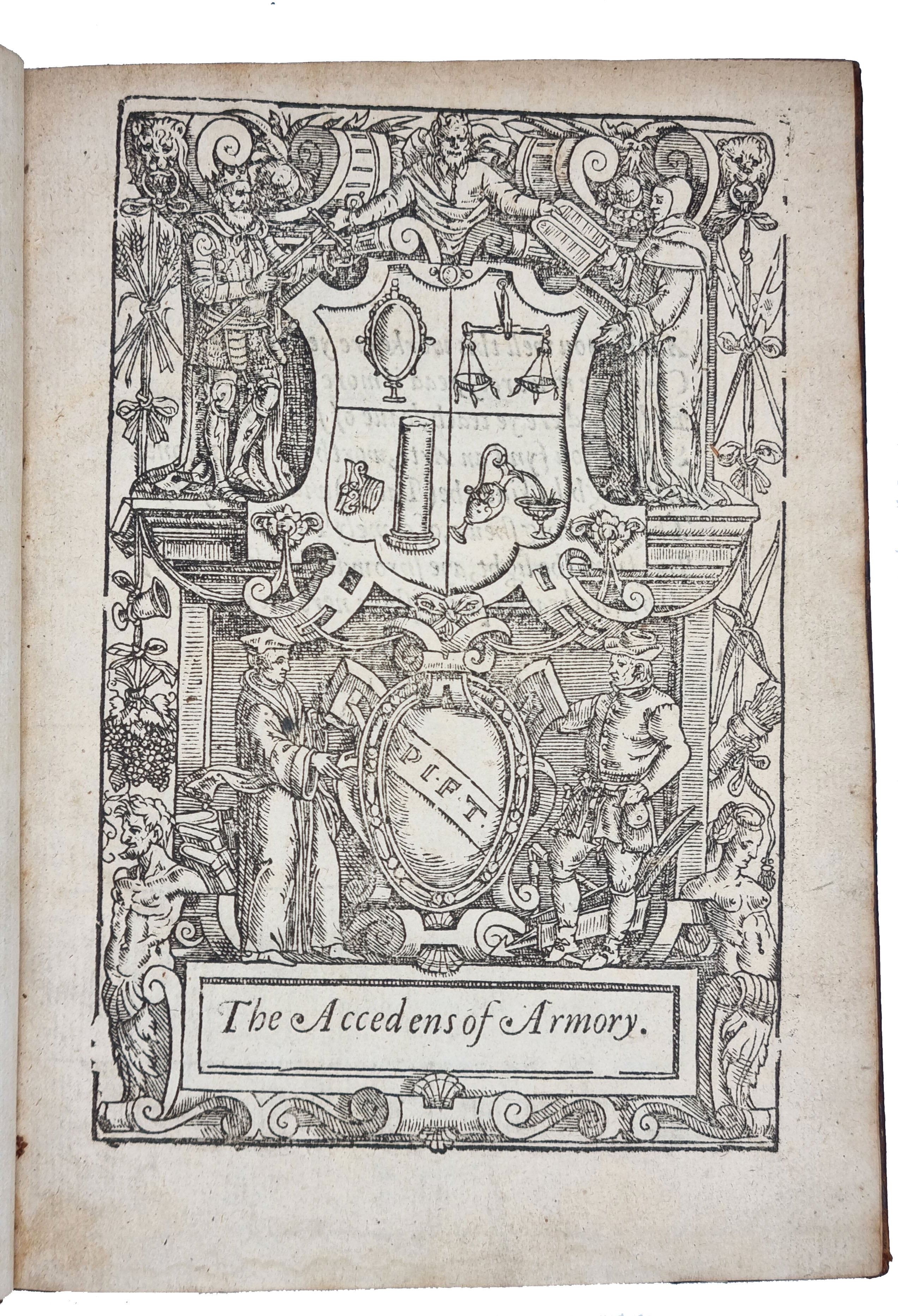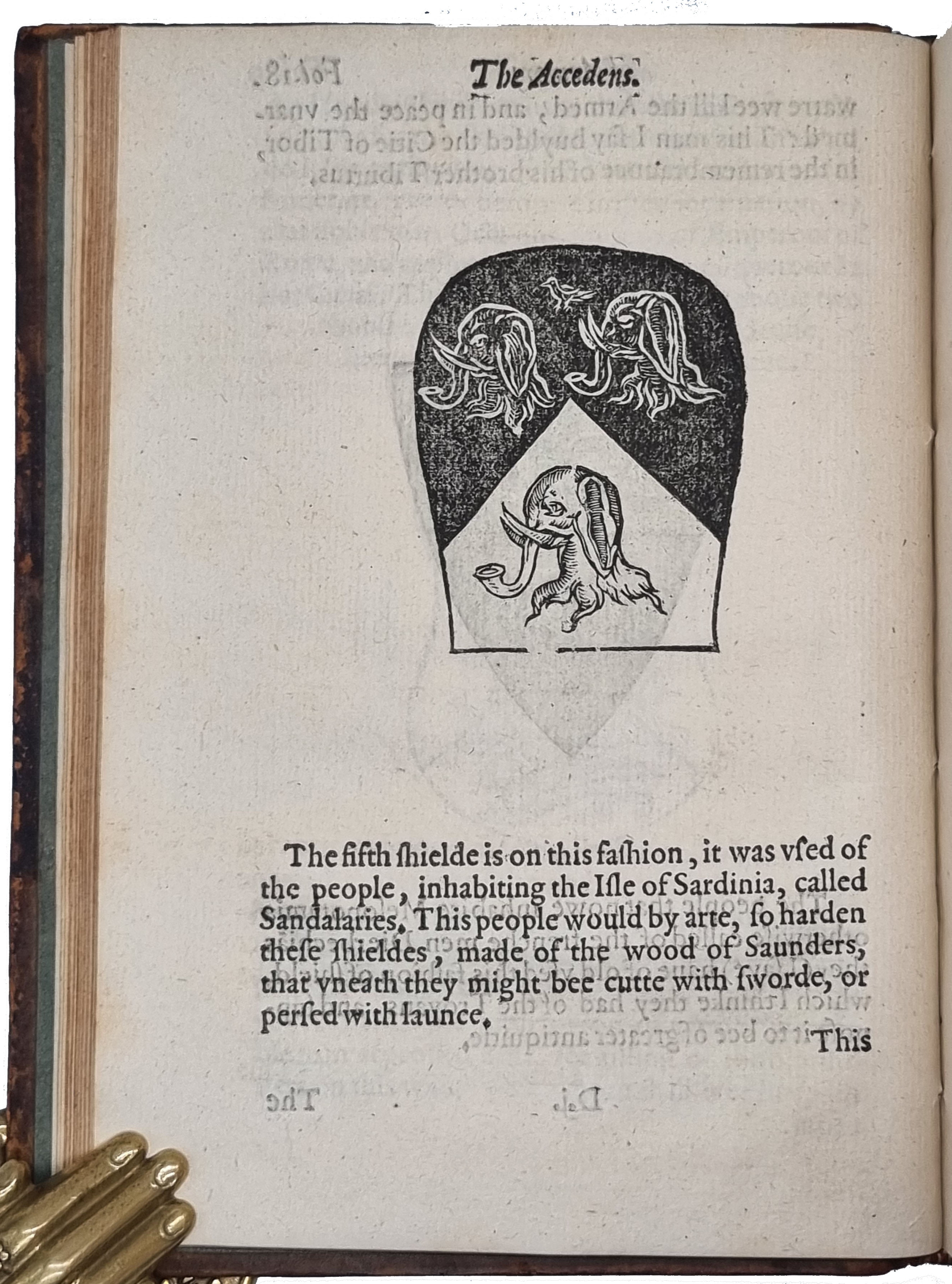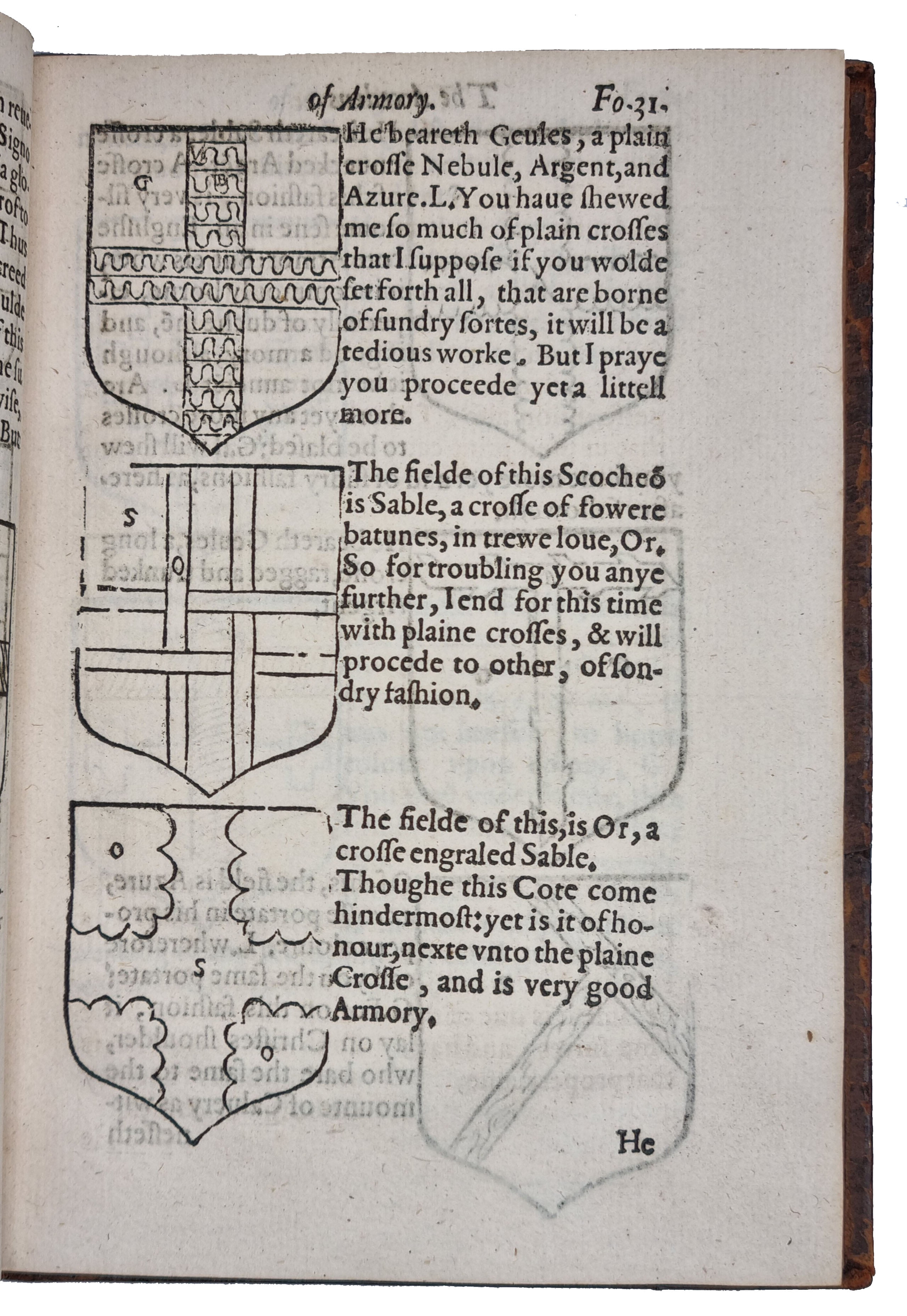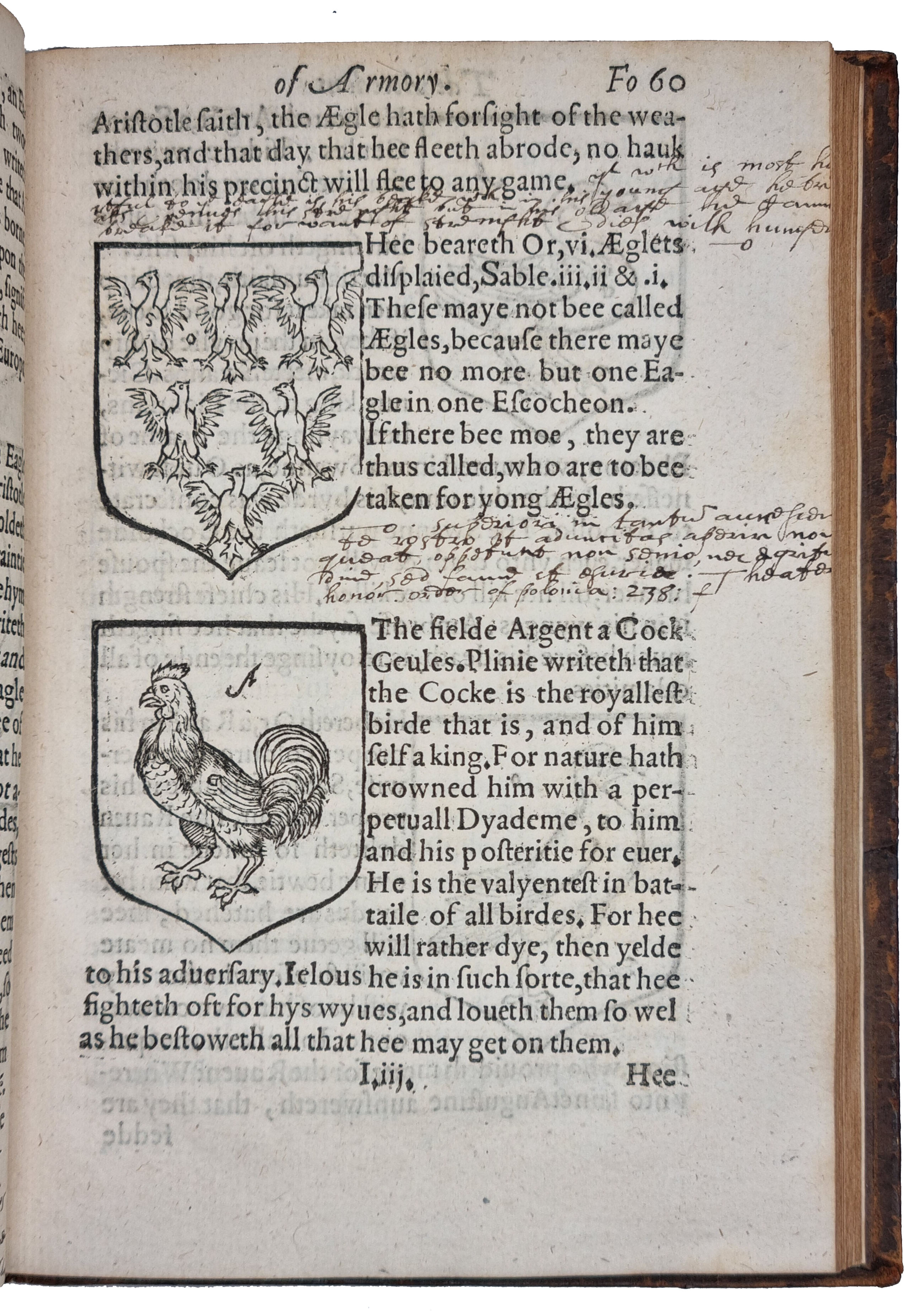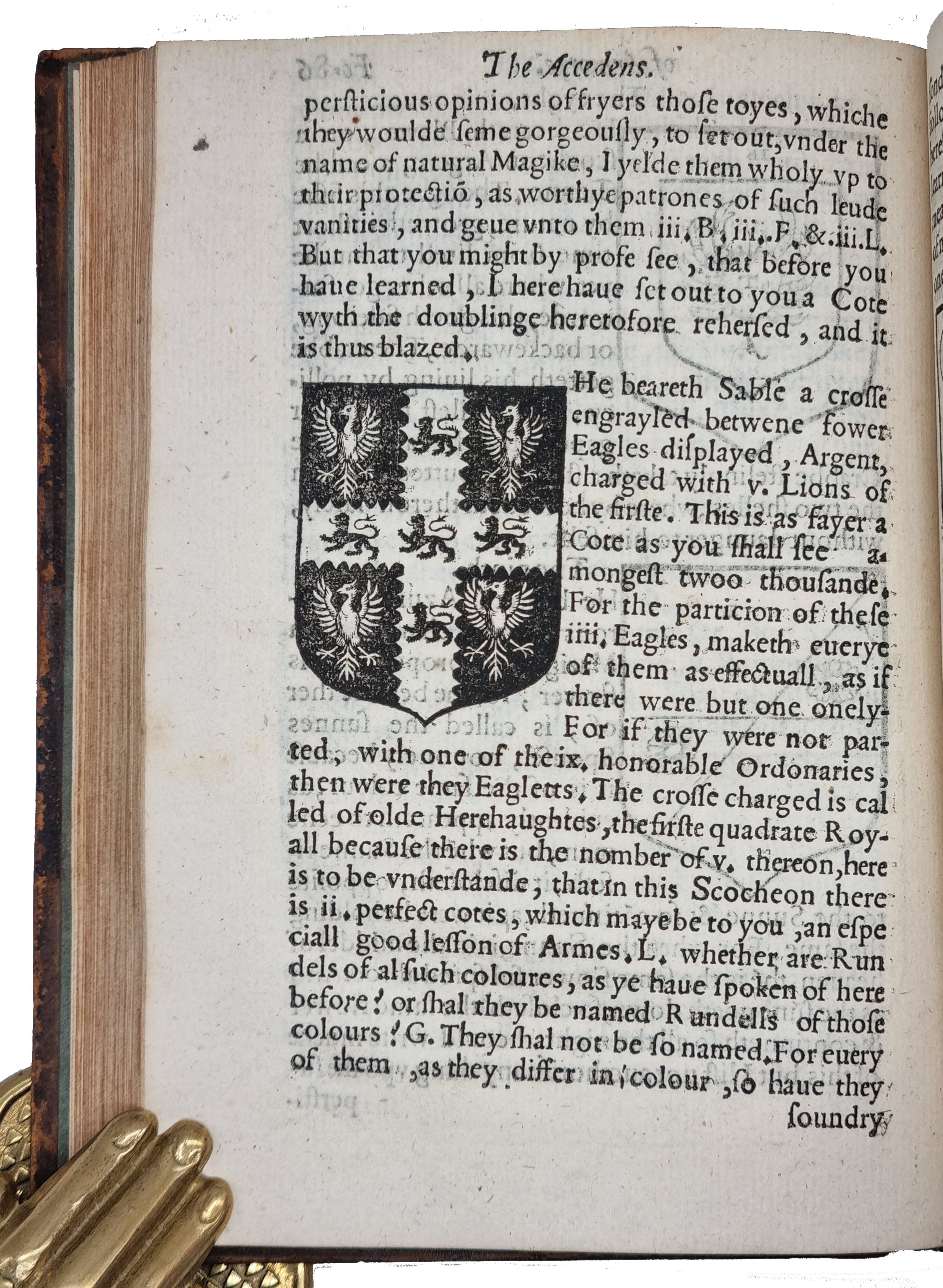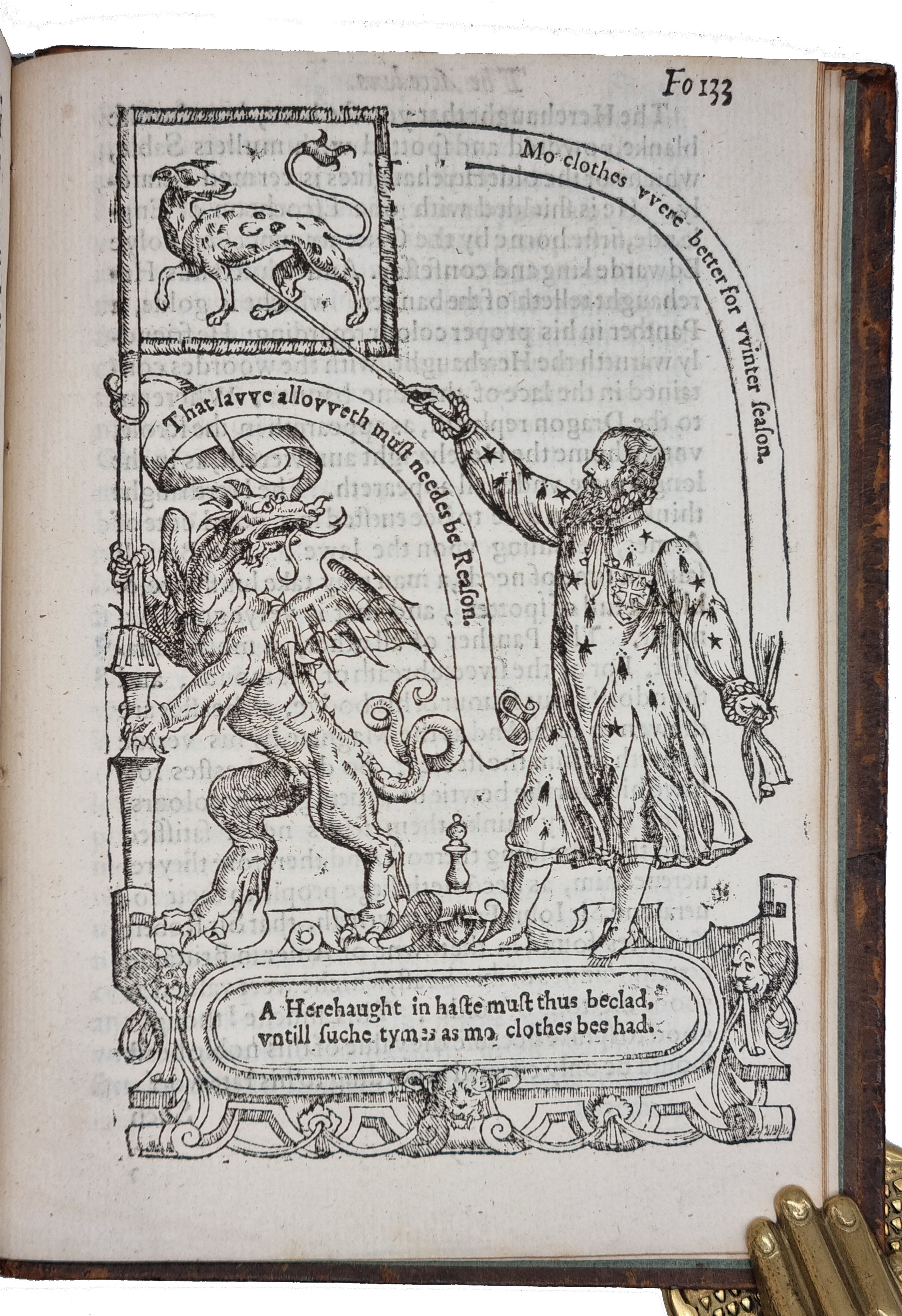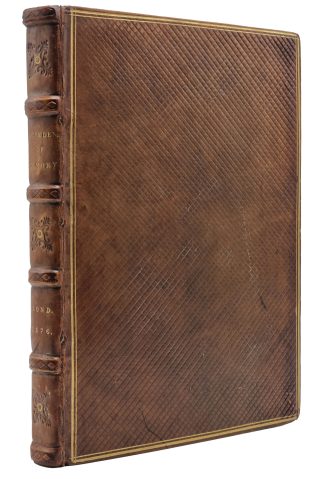LEGH, Gerard.
A FINE COPY
The Accedens of Armory.
London, Richard Tottel, 1576.£2,950.00
4to. ff. (vii) 135 (ii) plus final folding plate. Roman letter, very numerous heraldic illustrations, curious full-page woodcuts on title, ff. 133 and [137] and folding woodcut plate on f. [139], often missing. White on black decorated initials, early marginalia, mostly on ff. 59v-60r, slightly trimmed affecting a couple of words of manuscripts on each. Very small marginal flaw on ff.22-23, small hole to text on f.97, little rust stain on ff. 46-47. A very good, crisp, well-margined, copy in early nineteenth-century diced Russia, cover bordered and spine lettered gilt. Catalogue entry for this copy of Thomas Thorpe, December 1942, 4 guineas, loosely inserted.
A fine copy of Legh’s The Accedens of Armory, first published in 1562 a year before his death. This is the third edition, all by the same printer with spaces mainly to spacing and layout. After his education, funded by Robert Wroth of Durants in Enfield, Middlesex; Legh was apprenticed as a draper under his father and became a member of the Drapers’ Company. He was later distanced from the association after taking the side of the government over the city in an unknown matter, and returned to scholarship to write this work.
The text details the colours, shapes, and figures found in heraldry with in-depth descriptions of their appearance as well as illustrative woodcuts. Legh provides historical and symbolic context, noting the heraldic imagery attributed to various antique and classical figures or groups, such as the shield of Perseus and the symbols of Troy. He also notes the heraldic colours and symbols associated with personal qualities such as royalty, valour, loyalty, or hospitality. Biblical anecdotes or historical figures are provided to explain much of the history and symbolism associated with particular elements of a shield.
Described as the most popular heraldic work of the later 16th century, Legh uses the form of two avatars of the author, Gerarde the Herehaught and Legh the Caligat Knight, discussing the art of heraldry. Much of the discussion is theoretical and oblique to avoid transgressing the official privileges of the College of Arms. Legh provides detail on elements that might be unknown to the newcomer such as an explanation of the colours used, and lays out the detailing and illustration of shield by appearance to make them easier to describe and navigate. The preface opens: ‘To the honorable assembly of gentlemen in the Innes of Court and Chauncery, Gerard Legh vvisheth loialtie’. A second is addressed to the reader by Richard Argall of the Inner Temple, Richard was the father of Samuel Argall, the naval officer and adventurer who was the first to determine a shorter northern route from England to Virginia. He is best known as the captain who brought Pocahontas to the British, having abducted her from her father, the Chief of the Powhatan Confederacy.
The manuscript notes on ff. 59v-60r describe specific armorials similar to those in the text
ESTC S108418, STC 15390, Moule XVII, not in Lowndes.In stock



